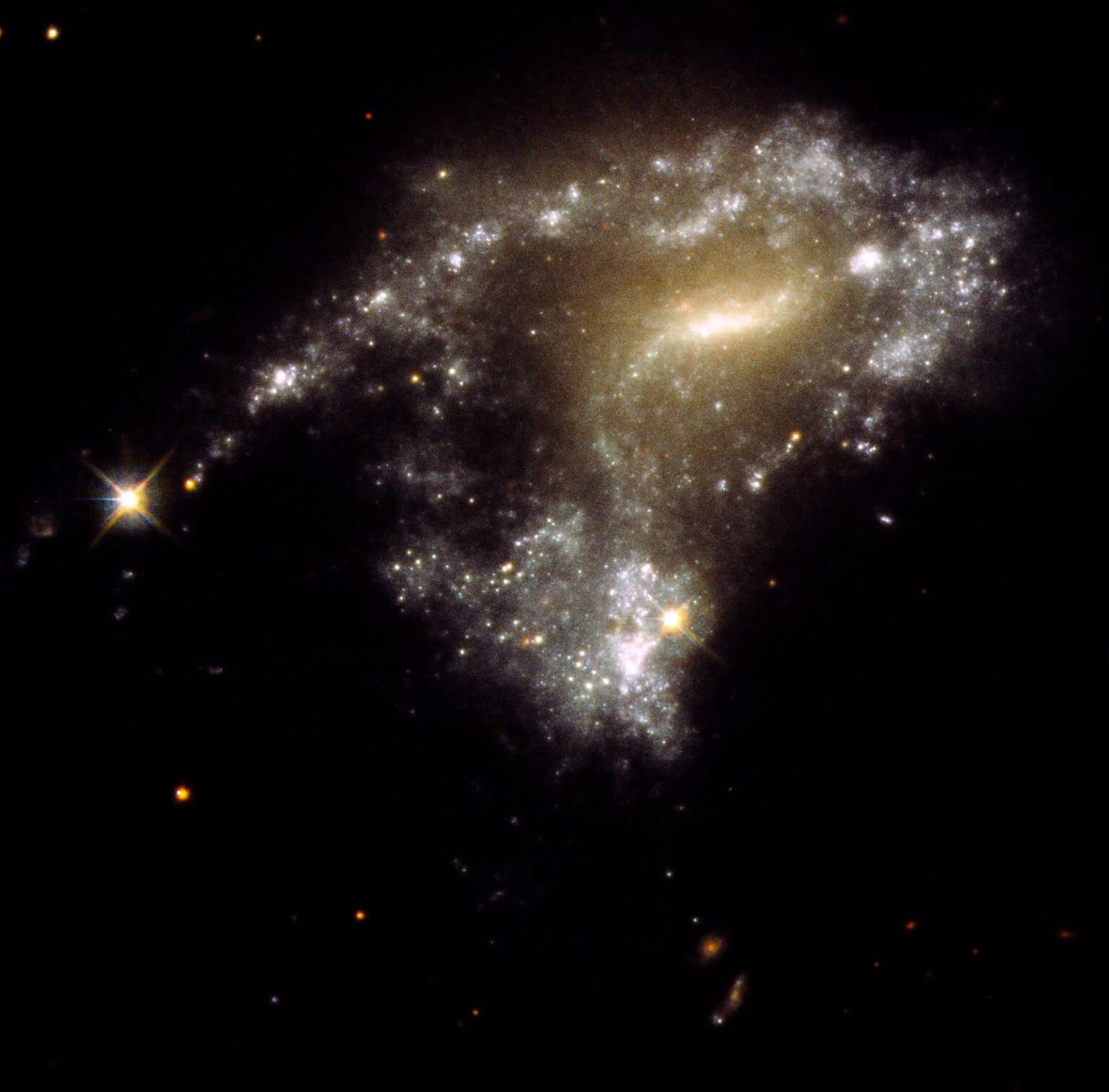The discovery of an S-shaped galaxy could revolutionize the understanding of the process of star formation

A collision of galaxies does not destroy stars as one might initially think, but actually creates the conditions for the creation of millions of stars and probably also accompanying planets. In a new study, researchers used the Hubble Space Telescope to home in on 12 galaxies that have long, tadpole-like tidal tails of gas, dust and stars formed by these collisions. The team found 425 new star clusters along these tails, each containing up to a million stars.
"When galaxies merge, clouds of gas collide and collapse, creating a high-pressure environment where stars can form," said Professor Jane Charlton from the research team. "The inner parts of these mergers have been studied a lot, but less was known about the possible formation of stars in the fragments that form from these mergers, such as in the tidal tails."
When galaxies interact, gravitational tidal forces pull out long streams of gas and dust. The gravitational pull between the entangled galaxies stretches the galaxy's spiral arms like toffee, and the star clusters along the tail look almost like a string of pearls. Two well-known examples of galaxies with such tidal tails are the Antennae and Mice galaxies, each with long, narrow finger-like projections.
In the new study, the team used a combination of new observations and archival data from Hubble to determine the age and mass of star clusters in the 12 tidal tails. They then determined the rate of star formation using data from two Earth-orbiting UV space telescopes.
The team found that many of the star clusters in the tidal tails are very young - only ten million years old. In addition, it seems that the clusters are formed at the same rate throughout the tail which extends for thousands of light years.
"It is surprising to see many young objects in the tails. We learn a lot from this about the efficiency of star formation," said lead author Michael Rodrock. "When there are tidal tails, new generations of stars are created that otherwise might not have existed."
Before the mergers, the galaxies were rich in dust clouds of molecular hydrogen that may have remained inert. As the clouds bumped into each other during the collision, the hydrogen was compressed until it condensed into a storm of star formation.
According to the researchers, the fate of these tense star clusters is uncertain. They may remain gravitationally intact and evolve into globular star clusters, like those orbiting outside the plane of our Milky Way Galaxy. Either they will disperse and form a halo of stars around a spiral galaxy or they will be ejected and become wandering intergalactic stars.
"We think star clusters in tidal tails were more common in the early universe, when the universe was smaller and collisions between galaxies were more frequent," Charlton said.
More of the topic in Hayadan:
